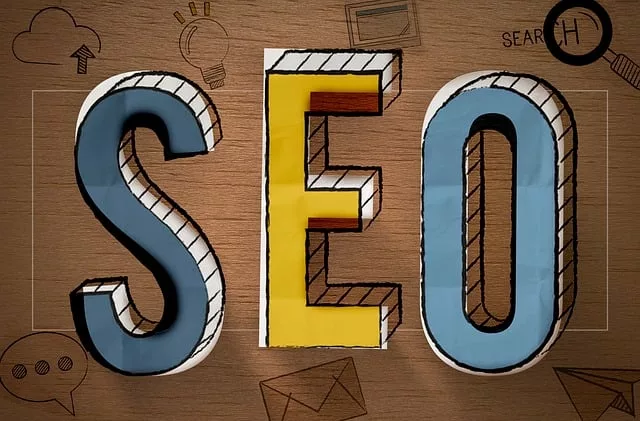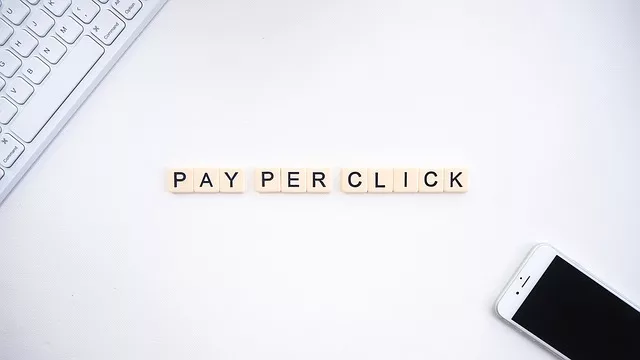In the competitive landscape of affiliate marketing, simply picking one strategy and sticking to it often falls short. The most successful marketers understand that a multifaceted approach is necessary to maximize visibility, build trust, and drive conversions. Two of the most effective methods, Pay-Per-Click (PPC) advertising and Search Engine Optimization (SEO), have their strengths. But when used strategically, they can amplify each other’s benefits in ways that far surpass what either could achieve alone.
PPC delivers immediate traffic, while SEO builds long-term authority and credibility. One gives you control, while the other earns you credibility. The common misconception is that you must choose one over the other, but that thinking overlooks a golden opportunity. Combining PPC and SEO into a unified marketing strategy can create a sustainable and scalable engine for affiliate success.
Whether promoting your products or recommending trusted platforms like Wealthy Affiliate, this dual strategy can help you dominate search results, increase conversions, and optimize your content for every stage of the customer journey. This article will explore how to blend PPC and SEO effectively, what pitfalls to avoid, and how this approach can help you build a long-lasting affiliate business.
Understanding PPC and SEO at a Glance
Before diving into how these two strategies can work together, it is essential to understand what each one does.
SEO, or Search Engine Optimization, enhances your website and content to improve your ranking in organic search results. It optimizes keywords, improves site speed, creates valuable content, and builds backlinks. SEO is powerful because it brings in free traffic, builds trust, and compounds over time. The drawback is that it usually takes weeks or even months to see measurable results.
PPC, or Pay Per Click advertising, allows you to appear in search results immediately by paying for ad placement. Platforms like Google Ads, Bing Ads, and social media networks let you target specific keywords, locations, demographics, and behaviors. The main advantage of PPC is speed. You can test offers quickly, gather data, and scale what works. The downside is that traffic stops as soon as you stop paying.
Each approach has its place. However, when you combine them, you achieve both the instant gratification of PPC and the lasting impact of SEO.


Why Affiliate Marketers Should Use Both
Affiliate marketing is where first impressions count, trust is crucial, and attention spans are short. With so much competition in every niche, relying solely on one traffic channel is a risky strategy. You create a safety net and an accelerator by integrating SEO and PPC.
For example, imagine you have just written a long-form blog post comparing affiliate marketing platforms, including Wealthy Affiliate. SEO might eventually bring that page to the top of Google, but what about in the meantime? With PPC, you can promote duplicate content through targeted search ads and drive traffic from the start.
This traffic is not just about clicks either. It provides invaluable data on user behavior, engagement, and conversions. That data can then inform your SEO efforts, helping you refine your keywords, restructure your content, and enhance your calls to action.
Conversely, your SEO research helps shape your PPC campaigns. Keywords that perform well organically can be used to craft highly targeted ads. Your top-ranking blog posts can become landing pages for paid campaigns. Insights from one channel naturally complement and strengthen the other.
PPC for Speed, SEO for Sustainability
One of the best ways to understand the synergy between PPC and SEO is by examining their complementary timelines.
PPC provides rapid results. You can launch a campaign in the morning and have traffic flowing by lunch. This speed is ideal for testing new offers, validating landing pages, or promoting time-sensitive content, such as webinars or product launches.
SEO, on the other hand, is your long-term foundation. It builds credibility with both search engines and readers. A well-optimized page can rank for months or even years, generating consistent traffic without requiring ongoing ad spend.
The smart move is to use PPC to generate immediate results while your SEO efforts gain traction. Over time, as your organic traffic grows, you can reduce your reliance on paid ads or shift your PPC budget to promote new or underperforming content.
For those promoting Wealthy Affiliate, this is particularly useful. You can use PPC to attract leads with search ads targeting terms like “affiliate marketing for beginners” or “best affiliate training program.” Then, as your SEO content starts ranking, you gain visibility in both the paid and organic sections of the search engine results page, giving you more real estate and higher click potential.

Using PPC to Refine SEO Content
One of the most overlooked benefits of PPC is its ability to serve as a platform for content testing. By analyzing how users interact with your ads, you can gather data that helps you improve your organic content.
For instance, you might run ads to two versions of a landing page—one focusing on step-by-step affiliate training and another on passive income success stories. Which page performs better tells you what your audience values most. You can then optimize your blog content around that theme.
Click-through rate (CTR), bounce rate, and conversion rate from PPC campaigns provide clues about which headlines, keywords, and messages resonate most effectively. Use that feedback to improve the meta titles, descriptions, and content structure of your SEO pages.
This feedback loop ensures that your SEO strategy is informed by user behavior, rather than relying on guesswork. It minimizes the time spent on content that does not perform and maximizes the reach of content that does.
Building Brand Awareness Across Channels
Another key benefit of combining PPC and SEO is the branding effect. When your name or website appears in the paid and organic results for the same keyword, it creates a perception of authority. Users are more likely to trust a brand they see multiple times, even within a single search session.
This is known as the halo effect. It boosts brand recall and increases the chances of a user clicking on your link, whether an ad or an organic result. Sometimes, even if the user does not click immediately, repeated exposure plants a seed that leads to a conversion later.
For affiliate marketers promoting Wealthy Affiliate, this can be a powerful strategy. If a prospect sees your site listed in both ad and organic spots when searching for terms like “how to start affiliate marketing” or “Wealthy Affiliate reviews,” they are more likely to trust your perspective. You become a familiar face in a crowded space.
This visibility reinforces your authority, builds trust, and improves conversion rates. It also makes your competitors work harder to get noticed.
SEO for Depth, PPC for Breadth
SEO is best suited for in-depth, value-rich content. Blog posts, tutorials, comparison guides, and pillar pages consistently perform well in organic search results. These types of content build topical authority, earn backlinks, and encourage long dwell times.
On the other hand, PPC allows you to promote a broader range of content quickly. You can advertise landing pages, squeeze pages, lead magnets, and email opt-ins without worrying about organic rankings.
Combining both means you can utilize your SEO efforts to establish your brand with in-depth content and leverage PPC to drive leads through high-converting funnels. Over time, your SEO content becomes the backbone of your brand, while PPC becomes the flexible front end that adapts to trends, seasons, and promotions.
This balance is key. SEO gives your site stability. PPC gives your strategy agility.

Retargeting and Funnel Optimization
One of the most innovative ways to utilize PPC in conjunction with SEO is through retargeting. Not every visitor converts on their first visit. Most people require multiple exposures to a brand before taking action.
With retargeting, you can display ads to individuals who have visited your website, engaged with your content, or clicked an affiliate link but did not complete a conversion. This keeps your brand top of mind and brings people back into your funnel.
For instance, if someone reads your blog post comparing affiliate programs but does not sign up for Wealthy Affiliate, you can show them a retargeting ad offering a free webinar or exclusive bonus for joining through your link.
This creates continuity and increases the likelihood of conversion without relying solely on organic traffic. It also makes your SEO traffic work harder for you, extending its value through paid touchpoints.
Keyword Harmony Between SEO and PPC
One of the most significant advantages of combining SEO and PPC is the ability to refine your keyword strategy. Keywords that drive traffic through organic search can be used to target PPC ads. Similarly, PPC keywords with high click-through rates can guide your SEO content creation.
Start by identifying top-performing SEO keywords using tools like Google Search Console or Ahrefs. Then create PPC campaigns that mirror those terms. This allows you to dominate the search results for your most valuable keywords.
Likewise, review your PPC data to find high-converting or high-volume search terms. If you are not already ranking for those keywords organically, create blog posts, guides, or landing pages around them.
This keyword harmony ensures that you are not missing opportunities on either front. It also improves your ROI by focusing your content and ad spend on terms that drive results.
Challenges and How to Overcome Them
Combining SEO and PPC is a powerful strategy, but it does require careful coordination. One common challenge is resource allocation. SEO requires time and consistency, while PPC necessitates a budget and ongoing optimization. Balancing the two can be tricky.
To manage this, start small. Focus on one or two key content pieces and run PPC ads to support them. Monitor performance and reinvest profits into expanding your content strategy.
Another challenge is measuring attribution. It can be challenging to determine whether a conversion originated from an organic visit, a paid ad, or a combination of both. Utilize tools such as UTM parameters, Google Analytics, and CRM tracking to gain a deeper understanding of how your channels interact.
Make sure your messaging is consistent across both strategies. If your SEO content promotes a free trial and your PPC ad offers a bonus, that can create confusion. Ensure your calls to action, branding, and value proposition are aligned across all touchpoints.
Building Long-Term Value with a Dual Strategy
At the heart of this dual approach is building something sustainable. SEO alone can be slow and unpredictable, and PPC alone can be expensive and temporary. But together, they create a balanced system that fuels growth and stability.
You get the speed and flexibility of PPC to test, scale, and drive immediate results. At the same time, you build a deep library of SEO content that grows your brand and authority over time.
This dual strategy is a proven path to success for affiliate marketers, especially those promoting established platforms like Wealthy Affiliate. It helps you reach more people, build more trust, and convert more leads while growing your presence in a competitive space.

